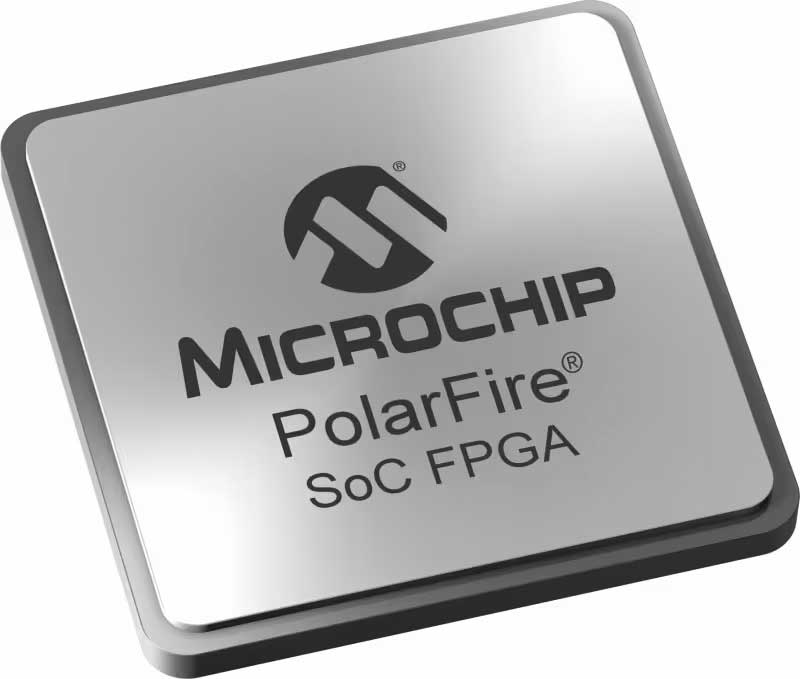Mid range, low power, with hard RISC-V based
Microchip features their PolarFire® SoC FPGA, built on the award-winning PolarFire FPGA architecture and is the first SoC FPGA with a deterministic, coherent RISC-V CPU cluster and a deterministic L2 memory subsystem enabling Linux and real-time applications.
The family by Microchip delivers up to 50% lower power than alternative FPGAs and spans from 23k to 461k logic elements and features 12.7G transceivers.
See Featured Applications
Features
- FPGA Fabric
- 254K logic elements (4-input LUT + DFF)
- 784 Math blocks (18×18 MACC)
- 16 SerDes lanes of 12.7 Gbps
- Microprocessor Subsystem
- Processor:
- 1x 64-bit RV64IMAC monitor/boot core
- 4x 64-bit RV64GC Application cores
- Fmax of 667 MHz (–40 °C to 100 °C Tj),
- 3.125 CoreMarks/MHz, 1.714 DMIPS/MHz
- Storage:
- MMC 5.1 SD/SDIO
- 1 Quad SPI flash controller
- 128 KB eNVM
- 56KB sNVM
- Memory Interfaces:
- 36-bit DDR4/DDR3/LPDDR4/LPDDR3 memory controller with SECDED
- Communication Interfaces:
- 2x GigE MACs, USB 2.0 OTG, 5x multi-mode UARTs, 2x SPI, 2x I2C, 2x CAN 2.0 Controllers.
- 2x PCIe Gen2 End Points/Root Ports
- Processor:
Featured Application: Gaming with FPGA – Yoshi’s Nightmare
Take a look at this blog article explaining the implementation of a video game with HDL and with the Icicle Kit which is based on Microchip’s PolarFire SoC, FPGA and Linux-capable RISC-V system in a single chip.
Featured Application: Edge Detection/Sobel Filter Using the Enclustra SoM based on the PolarFire SoC
The Mercury+ MP1 system-on-chip (SoC) module combines Microchip®’s PolarFire® SoC-series device with fast DDR4 ECC SDRAM, eMMC flash, SPI flash, dual Gigabit Ethernet PHY, USB 2.0 PHY and thus forms a complete and powerful embedded processing system.
Block Diagram: PolarFire SoC FPGA




